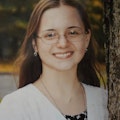The logic model: 10 steps to create a community oral health event for populations in need
Key Highlights
- The dental logic model can guide the planning and evaluation of community oral health programs.
- Community outreach and volunteerism is important for improving oral health equity.
- There are practical steps for developing effective preventive dental initiatives aligned with national health goals.
- Real-world volunteer experiences can inspire innovative approaches to oral health education.
- Organized planning, resource management, and evaluation play a big role in successful community health programs.
Through my professional experience as a dental assistant and dental lab technician, I learned the importance of time management skills for patient care. Whether preparing a patient’s schedule or fabricating dentures, organization is key. This is achieved through preparation, planning, and following detailed processes and procedures. These same concepts apply when creating an oral health event in your community.
During my final semester, I took a dental community health course. I developed an understanding how oral health professionals can influence the oral health of their community. The course taught how to implement a dental logic model to plan, implement, and evaluate community health programs.1
During the course lab, my classmates and I used the logic model as a resource for event planning and completed activities to design our own programs.1-3 We were required to hold community service events to provide dental and nutritional education to children at elementary and preschools. The class also had the opportunity to volunteer together at a school in Oneonta, New York, called Springbrook.4
Applying the logic model in the real world
Springbrook is on the forefront in New York for individuals with disabilities. We used the logic model and developed a plan to bring dental and nutritional education to children with varying developmental disabilities.1 We used toys, games, picture books, and prizes.
We brought what was less of an educational experience and more of an inspiration and positive association with teeth, the dentist, and healthy food choices for an age group where the dentist can be a scary experience.
Now as new graduates and licensed hygienists, we can continue to use the scope of our practice to be involved in our communities. We can use what we learned in our community health lab to assess community oral health needs and develop plans to address those needs.
Connecting community outreach to national oral health goals
Healthy People 2030 is a 10-year plan developed by the Department of Health and Human Services with goals to improve health and well-being and eliminate health disparities in the US. The goals relate to various areas of health and wellness, including oral health.2,3
They intend to increase the number of preventive dental visits for low-income populations, the number of children and teens who receive molar sealants, and detect oral and pharyngeal cancers earlier. Healthy People 2030 is a vital resource and exceptional tool for developing preventive community health outreach programs.2,3
It is my belief that these critical, preventive oral health goals set by Healthy People 2030 can be achieved through increased volunteerism from oral health providers. Implementing public health programs can increase awareness, provide access to care, and reduce health disparities.1-3
Using our skills to serve underserved populations
As oral health-care providers, we can help populations that lack access to oral health care and can be overlooked. My education at Springbrook inspired me to research different populations in need of oral health education or dental care.4
Just as we have the responsibility to perform dental hygiene care for each of our patients, we can also perform it on a larger scale for populations in need. We assess, create a dental hygiene diagnosis, develop a plan, implement that plan, evaluate its success, and of course, document everything.1
10 steps of the logic model
Should you be inspired to create a preventive outreach event, here are the 10 core steps of the logic model.
Step 1: Identify a problem: A population at risk, why they are at risk, and how your program can address their needs.
Step 2: Construct specific goals: How state and federal programs can assist, and how Healthy People 2030 aligns with the goals
Step 3: Inputs: What resources you have access to and what resources you need to acquire for your program, such as a computer, teaching supplies, or handouts
Step 4: Activities: Education material to be used, pretests, post-tests, roles assigned, and responsibilities delegated
Step 5: Outcome: What is expected to be accomplished in the short-term and long-term, and what are the gradual changes in behaviors?
Step 6: Other influences: donations, fund raisers, location
Step 7: External factors: You cannot control these, but they can affect your success, such as weather at an outdoor event.
Step 8: Ensure goals are met: Write out each activity, the steps, people involved, supplies, and budget needed.
Step 9: Review budget: Ensure everything is covered.
Step 10: Qualitative evaluation: Review if the program is ready to go with supplies, budget, attendance, and information delivery. Quantitative evaluation in percentage of knowledge, behavior, and overall impact.1
References
1. Nielsen-Nathe C. Dental Public Health & Research: Contemporary Practice for the Dental Hygienist. 4th ed. Pearson. 2017
2. Healthy People 2030. Oral conditions. Office of Disease Prevention and Health Promotion. https://odphp.health.gov/healthypeople/objectives-and-data/browse-objectives/oral-conditions
3. Healthy People 2030: Oral health. Centers for Disease Control and Prevention. https://www.cdc.gov/oral-health/php/healthy-people-2030/index.html
4. Pondolfino KL. Educational volunteerism opportunities to assist with personal professional experience. Community Health Lab. Central Region New York Dental Hygienists’ Association. Springbrook Event. February 2025.
About the Author

Haley Floess, RDH
Haley has been in the dental field nearly 10 years as a dental assistant and a dental lab technician in upstate New York. She graduated from SUNY Broome Community College in May 2025 with an applied associate’s degree in dental hygiene. As an assistant she worked primarily with a prosthodontist but also rotated through ortho, oral surgery, pediatrics, and general practices. Her work has been with Medicaid and other government-sponsored insurances to provide care to low socioeconomic populations.
